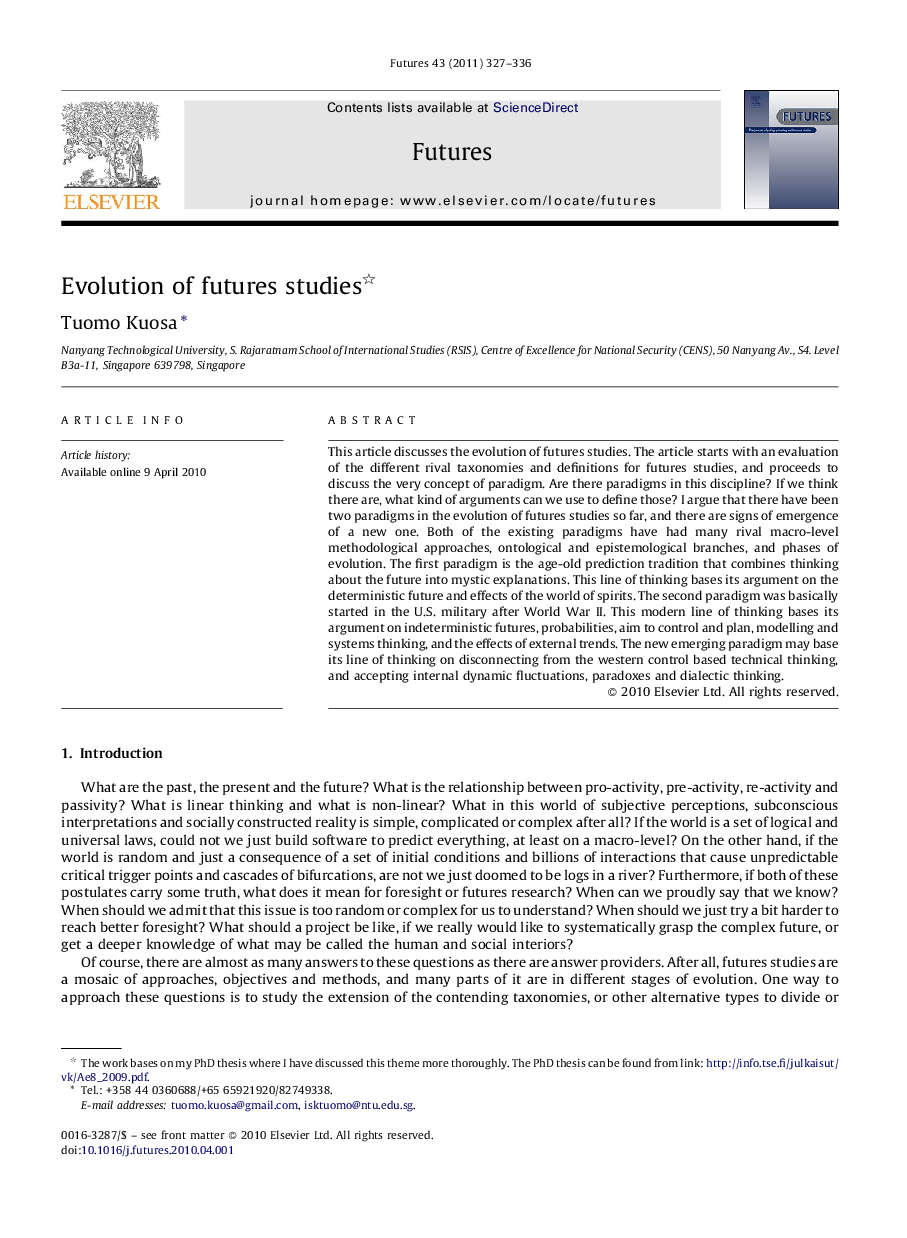| کد مقاله | کد نشریه | سال انتشار | مقاله انگلیسی | نسخه تمام متن |
|---|---|---|---|---|
| 1015827 | 939904 | 2011 | 10 صفحه PDF | دانلود رایگان |

This article discusses the evolution of futures studies. The article starts with an evaluation of the different rival taxonomies and definitions for futures studies, and proceeds to discuss the very concept of paradigm. Are there paradigms in this discipline? If we think there are, what kind of arguments can we use to define those? I argue that there have been two paradigms in the evolution of futures studies so far, and there are signs of emergence of a new one. Both of the existing paradigms have had many rival macro-level methodological approaches, ontological and epistemological branches, and phases of evolution. The first paradigm is the age-old prediction tradition that combines thinking about the future into mystic explanations. This line of thinking bases its argument on the deterministic future and effects of the world of spirits. The second paradigm was basically started in the U.S. military after World War II. This modern line of thinking bases its argument on indeterministic futures, probabilities, aim to control and plan, modelling and systems thinking, and the effects of external trends. The new emerging paradigm may base its line of thinking on disconnecting from the western control based technical thinking, and accepting internal dynamic fluctuations, paradoxes and dialectic thinking.
Journal: Futures - Volume 43, Issue 3, April 2011, Pages 327–336